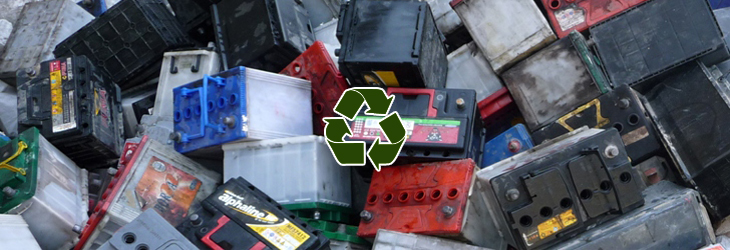  |
|
Home »Scrap Recycling » Lead Acid Battery Recycling » 
Lead Acid Battery Recycling / Used BatteriesUsed batteries pose a threat to our environment and should be managed properly for disposal. Hazardous material makes up most of the ingredients of this product that can leach out into our waterways, contaminating our future resources. Some local agencies currently have imposed regulations to manage this material properly for Used Lead Acid Battery Recycling. Waste batteries may be considered hazardous waste because of their corrosivity, reactivity, or toxicity. According to battery-producing industry sources, nickel cadmium batteries typically exhibit hazardous waste characteristics, whereas low mercury alkaline and carbon-zinc batteries do not. Alkaline batteries with higher concentrations of mercury and larger mercury batteries would be likely to test as hazardous, and some lithium batteries might be considered reactive. Lead acid batteries are considered corrosive, as well as toxic. (Gel cell batteries, are a subset of Lead acid batteries, and should be treated the same.) Button batteries may or may not test as hazardous, depending on their type and size.
Flooded (or wet) Lead acid batteries are those where the electrodes / plates are immersed in electrolyte. Since gases created during charging are vented to the atmosphere, distilled water must be added occasionally to bring the electrolyte back to its required level. The most familiar example of a flooded Lead acid cell is the 12V automobile battery. Absorbed glass mat (AGM) batteries are a type of sealed Lead acid or valve-regulated Lead acid (VRLA) battery where the electrolyte is immobilized. A highly porous and absorbent micro fiber glass mat, which is partially filled with electrolyte of the desired specific gravity, is used as the separator. Gel cell batteries are a type of sealed Lead acid or valve-regulated Lead-acid (VRLA) battery. In gel cell Lead acid batteries, fumed silica is added to the electrolyte, causing it to harden into a gel. On subsequent charges some water is lost, drying the gel until a network of cracks and fissures develops between the positive and negative electrodes providing a path for the oxygen recombination. Some varieties of Lead acid batteries are rechargeable. Newer varieties of Lead acid batteries have been designed that are completely sealed, allowing for cleaner energy sources and a lowered environmental affect when recycled.. Battery RecyclingBatteries contain a range of metals which can be reused as a secondary raw material. There are well-established methods for the recycling of most batteries containing Lead, nickel-cadmium, nickel hydride and mercury. For some, such as newer nickel-hydride and lithium systems, recycling is still in the early stages. There are a number of different recycling processes for batteries, which are aimed at recovering a variety of materials:
|
|
Company
|





